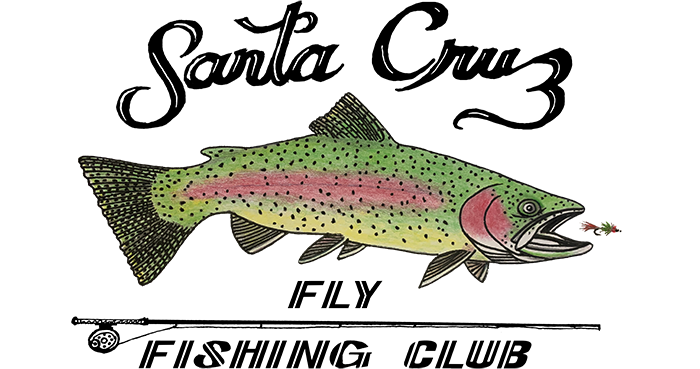- As I write this I am listening to the State Water Resources Control Board August meeting. They are discussing the extreme drought we’re in, as well as planning for another year of dry conditions in 2022. The discussion is serious and covers many streams were emergency drought stream flows are either in place or are about to start.
- Two of the most impacted streams are the Scott & Shasta Rivers, tributaries to the Klamath River. These streams are main spawning & rearing habitat for Chinook, Coho & steelhead. We have sent 2 letters to the State Board supporting emergency flow recommendations supported by CDFW. The letters can be read here: https://www.nccffi.org/conservation-efforts/. See Item #12 on the list.
- Joining us on our advocacy for the Scott & Shasta is the California Sportfishing Protection Alliance (CSPA). They have been very active and made technical recommendations with the State Water Board and support the implementation of emergency curtailment of diversions of water.
- Over many years CSPA and NCCFFI have worked on many issues that negatively impact our fisheries and work together on FERC power dam relicensing to improve flows and habitat, as well as to work for improved flows in the S.F. Bay-Delta and its tributaries. It takes a team effort to be successful in keeping our fisheries healthy and available for sport fishers. https://calsport.org/news/
- CSPA and NCCFFI have decided to join together more closely in the future, and to work together and share information with members. Bill Jennings of CSAP and Mark Rockwell of NCCFFI have discussed the relationship and agreed to due several actions: 1) Share information each organization is working on, and report to members; 2) Do monthly reports for our members and place these reports on our websites; 3) work together to create a conservation presentation to use of fly club visits to inform our members about conservation needs and work being done.
- Current Joint Efforts – Yuba River: Both CSPA and NCCFFI are working on relicensing on the Yuba system, and focused on Water Quality Certification. Both organizations are working with the South Yuba River Citizens League (SYRCL), and focused on funding by Yuba County Water Agency forhabitat improvement on the Lower Yuba & a pilot program to re-introduce salmon to the Upper Yuba. Stanislaus River – CSPA is working to block a proposed water transfer of up to 100,000 acre-feet to Westlands Water District. This transfer would greatly reduce water carry-over in New Melones Reservoir which is needed to protect Delta fish if the 2022 water year is dry.
- Santa Clara Valley Watershed – NCCFFI is working with Cal Trout, TU, PCFFA and Flycasters of San Jose to improve salmon & steelhead streams in the Valley. Coyote Creek, Guadalupe River & Stevens Creek are the streams of focus. We are now working on a MOU with Valley Water to ensure future cooperative efforts to complete the Fish & Aquatic Habitat Cooperative Effort (FAHCE) for these streams, signed in 2003. We are also now reviewing the draft EIR for the Guadalupe & Stevens Creek. Work to be done includes: barrier removal, stream enhancements for rearing, improved spawning habitat & improved water flows. This will be a 10 year effort to recover and stabilize salmon & steelhead populations.
- Smith River Fishery Monitoring Plan – We have been notified that monitoring will start for both Steelhead and Chinook Salmon in California’s last great anadromous river in the Fall of 2021. The Tribal partner – Tolowa Dee-Ni Nation – will be doing the monitoring and running DIDSON sonar monitoring equipment. This will be the first time we will have an annual monitoring program on this river, and it is hoped that it will take place over at least 3 generations of Chinook (9-12years) and Steelhead. This information will be useful for managing the river fishing regulations to ensure they are consistent with run size and population health.
Summary on Conservation & Fly Fishing
After several discussions with various club Presidents and members, it is clear that fishery conservation is an important benefit NCCFFI brings to clubs & members. It is also noted that conservation is not always a primary focus for some club members. The sport of fly fishing is focused on casting, tying and getting together to fish, and is focused on the social process that clubs provide. However, if we don’t have healthy fisheries and watersheds we have no real way to put our casting and tying skills into action. I think we all recognize that no fish means no sport.
So, my plea to everyone is to continue to support our Council’s conservation efforts, and our ability to join with other partners, like CSPA, Cal Trout & TU to keep our state’s valuable natural resources healthy and available. That takes work, effort and time. In our Council the conservation work never ends because the demands made on our natural resources is great, and all natural resources are in limited supply.
Fishery Conservation is important to all fly fishers. NCCFFI needs our clubs & members to recognize that conservation is one of our primary purposes and we do it to keep our sport alive and fly fishers able to catch fish.
Your support can come by: 1) joining us on our conservation network, 2) financial contributions by clubs to NCCFFI to allow us to do this work, 3) Taking an active part in local watershed conservation efforts and working to include NCCFFI in that effort. Grants are available through this Council.
Contacts for questions or to contribute:
Mark Rockwell, 530-559-5759, mrockwell1945@gmail.com
Send contributions to: NCCFFI c/o Tom Smith, Treasurer, P.O. Box 7231, Reno, NV 89510-7231 (all contributions are tax deductible)
Posted on August 23rd, 2021
